South Africa’s rich tapestry of avian life is adorned with a captivating array of garden birds, each species contributing to the vibrant symphony of nature.
Here, we delve into the realm of 19 Garden Birds of South Africa, offering a comprehensive exploration of these winged inhabitants that grace the country’s diverse landscapes.
From the striking Southern Masked Weaver with its intricate nests to the gentle cooing of the Red-eyed Dove, this compilation brings to light the fascinating lives of these feathered denizens.
In the gardens of South Africa, the Cape Weaver weaves intricate stories with its vibrant plumage, while the Cape Sparrow’s sociable chirps create a lively atmosphere.
The Olive Thrush, with its melodious tunes, and the Cape Robin-Chat, adorned with a distinctive eye-stripe, add enchantment to this avian mosaic.
Through this exploration, we aim to unravel the intricacies of their behaviors, shedding light on their roles in the ecosystem and emphasizing the importance of conservation.
Join us on this ornithological journey as we unveil the beauty and significance of 19 Garden Birds that grace the landscapes of South Africa. Stay sharp.
19 Garden Birds of South Africa
Discover the enchanting world of South Africa’s garden birds, where vibrant plumage meets melodic calls.
In this exploration, we unveil the lives of 19 winged residents, from the intricate nest-weaving of the Southern Masked Weaver to the gentle cooing of the Red-eyed Dove.
Join us on a journey through the avian wonders that grace South Africa’s diverse landscapes.
1. Southern Masked Weaver
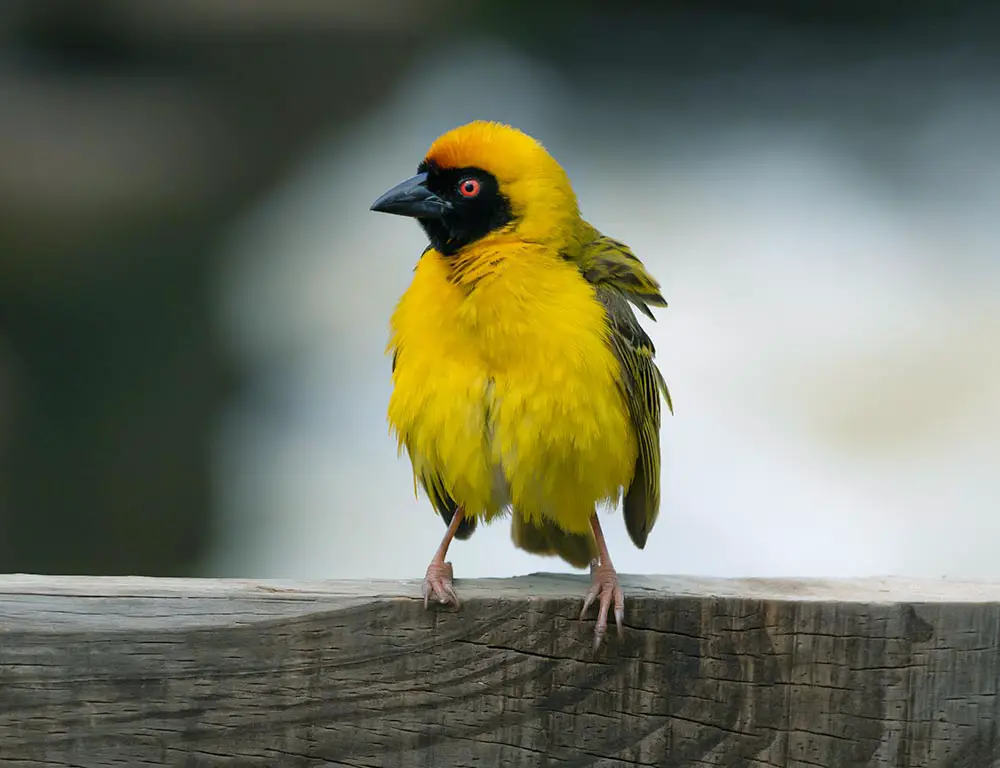
- Scientific name: Ploceus velatus
- Population: Abundant
- Life span: 5-10 years
- Size: 5.5-6.3 inches
- Weight: 25-40 grams
- Food: Mainly seeds, insects, and nectar
- Status: Least Concern (LC)
The Southern Masked Weaver, with its striking yellow plumage and intricate nest-weaving skills, is a common sight in South African gardens.
These birds are social and often found in colonies, creating elaborate hanging nests.
Their lifespan ranges from 5 to 10 years, and their diet consists of seeds, insects, and nectar.
These skilled avian architects contribute to the lively ambiance of the garden as they engage in complex courtship displays.
2. Laughing Dove
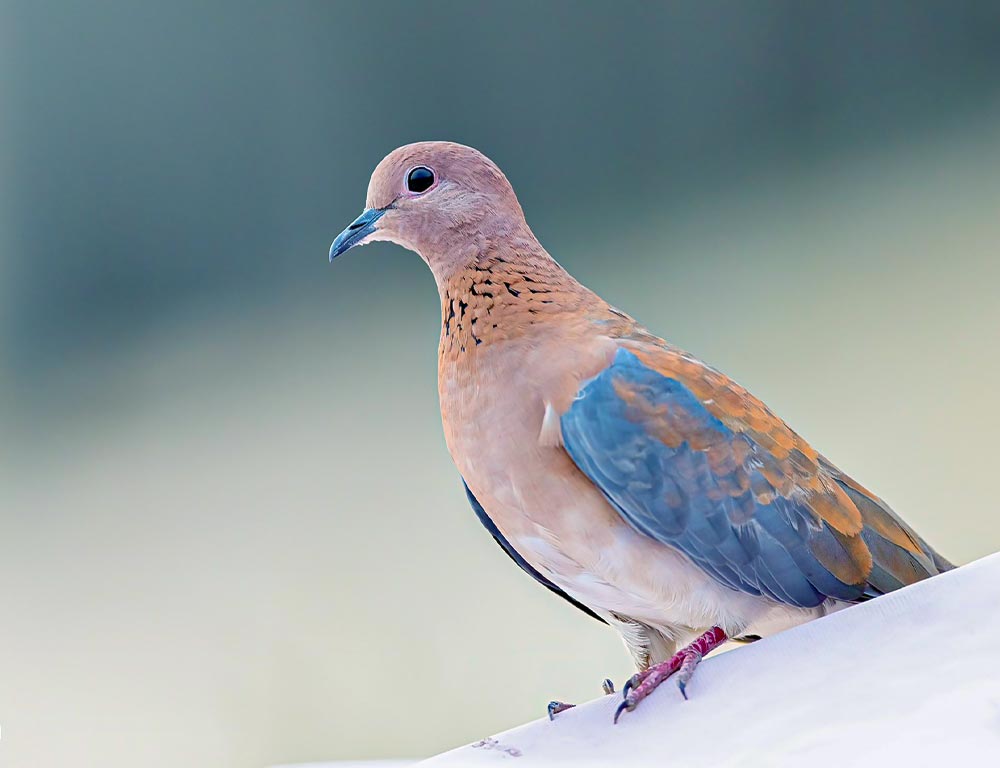
- Scientific name: Spilopelia senegalensis
- Population: Common
- Life span: 2-4 years
- Size: 9-10 inches
- Weight: 85-120 grams
- Food: Seeds, grains, and small insects
- Status: Least Concern (LC)
The Laughing Dove is a frequent visitor to South African gardens, known for its soft, rhythmic cooing.
With a common lifespan of 2 to 4 years, these doves are medium-sized, feeding on a diet of seeds, grains, and small insects.
Their gentle nature and distinctive calls contribute to the tranquil garden atmosphere.
3. Red-Eyed Dove
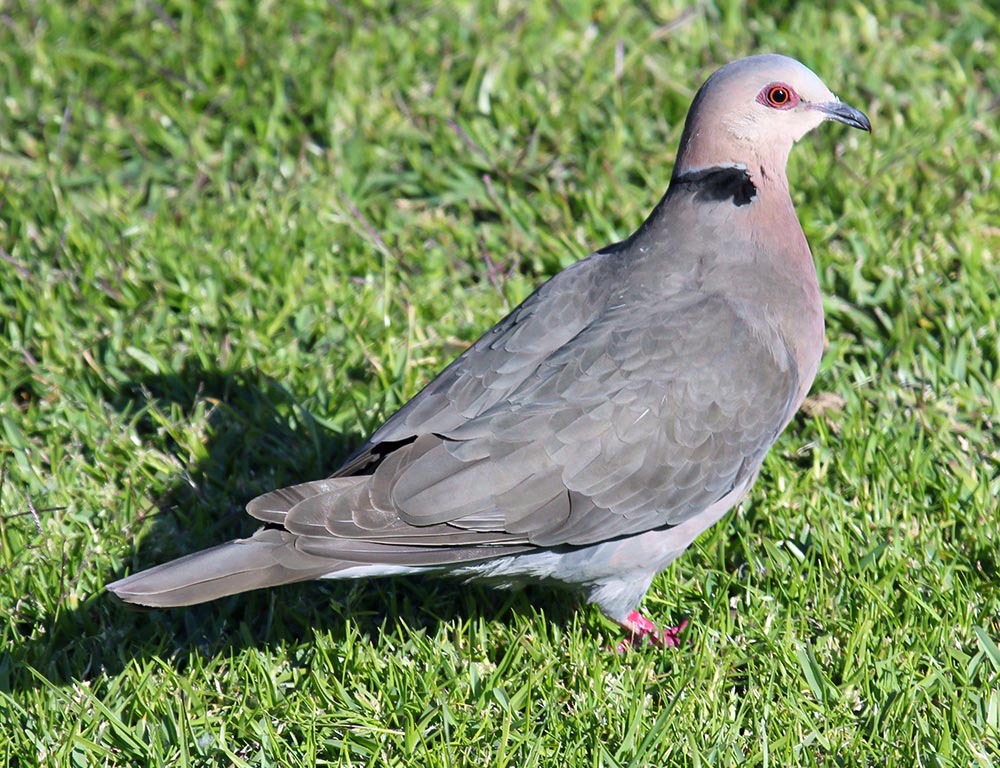
- Scientific name: Streptopelia semitorquata
- Population: Common
- Life span: 5-9 years
- Size: 12-14 inches
- Weight: 150-200 grams
- Food: Seeds, grains, and small invertebrates
- Status: Least Concern (LC)
The Red-Eyed Dove, a widespread garden inhabitant, boasts a reddish eye ring and a soothing cooing call.
With a life expectancy of 5 to 9 years, these doves primarily feed on seeds, grains, and small invertebrates. Their presence enhances the acoustic and visual appeal of the garden.
4. Cape-Turtle Dove
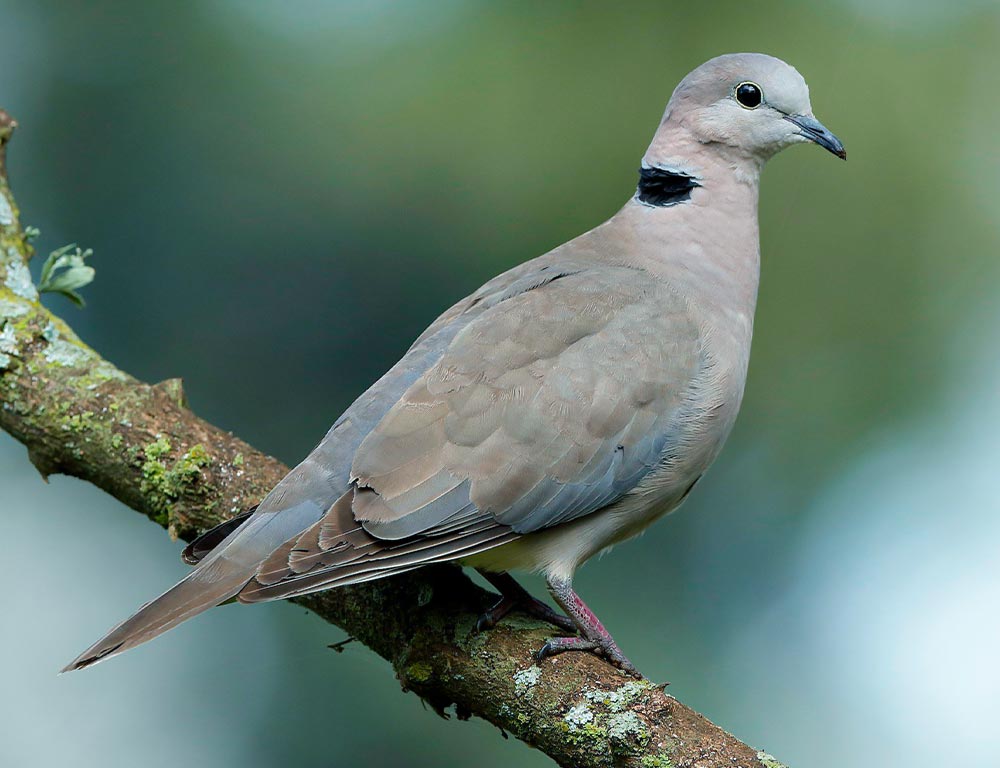
- Scientific name: Streptopelia capicola
- Population: Common
- Life span: 3-5 years
- Size: 10-12 inches
- Weight: 120-160 grams
- Food: Seeds, grains, and small insects
- Status: Least Concern (LC)
The Cape Turtle Dove, characterized by its distinctive black-and-white striped neck, is a frequent visitor to South African gardens.
With a life expectancy of 3 to 5 years, these doves feed on seeds, grains, and small insects.
Their gentle demeanor and graceful presence make them a charming addition to the garden landscape.
5. Dark-capped Bulbul
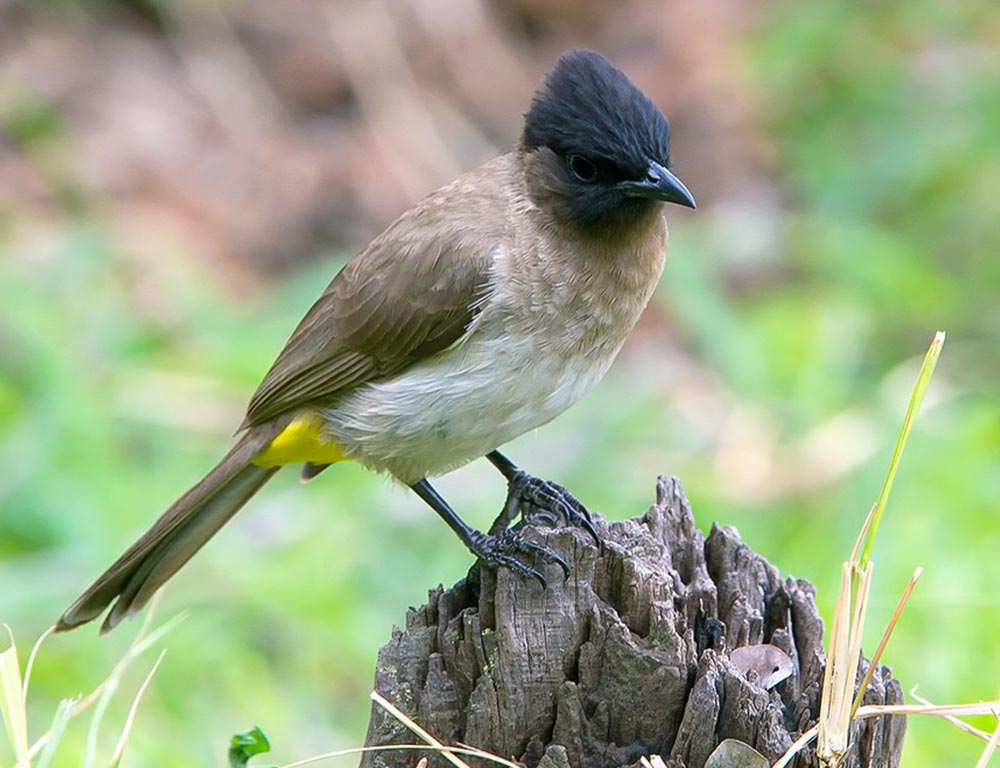
- Scientific name: Pycnonotus tricolor
- Population: Common
- Life span: 6-10 years
- Size: 7-8 inches
- Weight: 20-30 grams
- Food: Fruits, insects, and nectar
- Status: Least Concern (LC)
The Dark-capped Bulbul is a lively garden bird in South Africa, easily identified by its dark cap and melodious calls. Commonly found, these bulbuls have a life expectancy of 6 to 10 years.
Their diet is diverse, including fruits, insects, and nectar. With agile movements and cheerful songs, they contribute to the vibrant charm of the garden.
6. Grey Go-away Bird

- Scientific name: Corythaixoides concolor
- Population: Common
- Life span: 10-15 years
- Size: 18-20 inches
- Weight: 200-400 grams
- Food: Fruits, leaves, and buds
- Status: Least Concern (LC)
The Grey Go-away Bird, with its distinctive gray plumage and crest, is a frequent garden visitor in South Africa.
Known for its melodious calls that sound like “go away,” these birds have a long life expectancy of 10 to 15 years.
Their diet primarily consists of fruits, leaves, and buds, making them an interesting and vocal presence in the garden.
7. Crested Barbet
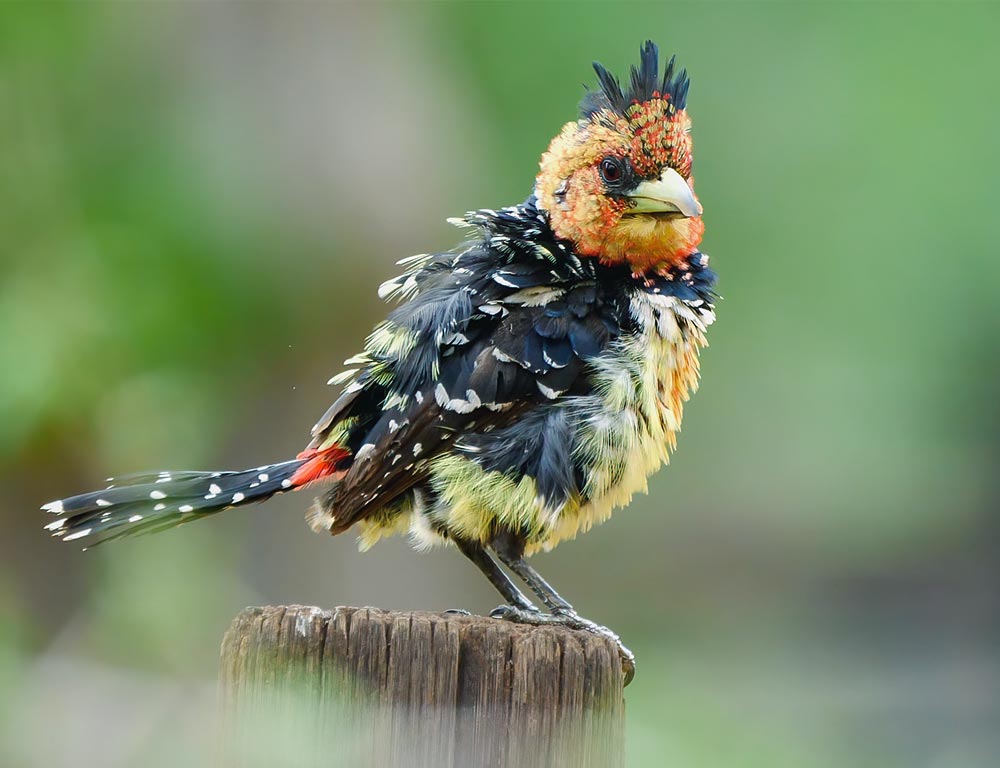
- Scientific name: Trachyphonus vaillantii
- Population: Common
- Life span: 10-15 years
- Size: 8-13 inches
- Weight: 80-150 grams
- Food: Fruits, insects, and seeds
- Status: Least Concern (LC)
The Crested Barbet, adorned with vibrant colors and a distinctive crest, is a common garden bird in South Africa.
With a life expectancy of 10 to 15 years, these barbets feed on a varied diet of fruits, insects, and seeds.
Their lively and colorful presence adds a touch of exuberance to the garden landscape.
8. Hadeda Ibis
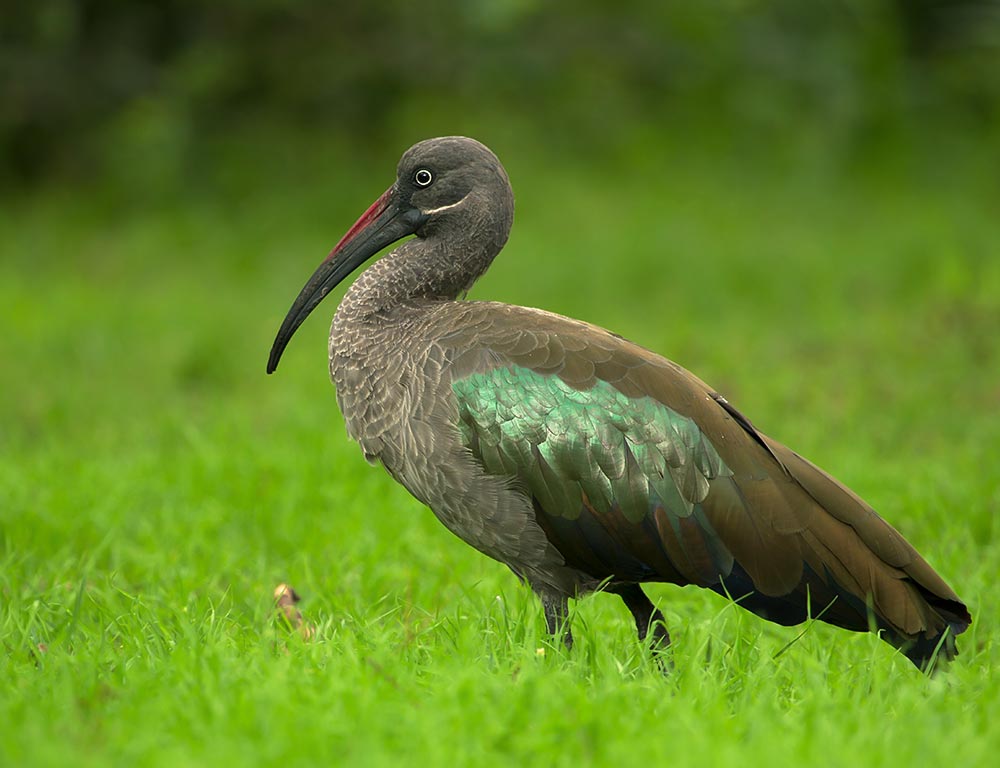
- Scientific name: Bostrychia hagedash
- Population: Abundant
- Life span: 10-15 years
- Size: 20-28 inches
- Weight: 700-900 grams
- Food: Insects, small animals, and plant matter
- Status: Least Concern (LC)
The Hadeda Ibis, with its distinctively long beak and raucous calls, is an abundant garden bird in South Africa.
These ibises have a lifespan of 10 to 15 years and feed on a varied diet, including insects, small animals, and plant matter.
Despite their noisy nature, their large presence and foraging habits make them an integral part of the garden ecosystem.
9. African Red-eyed Bulbul
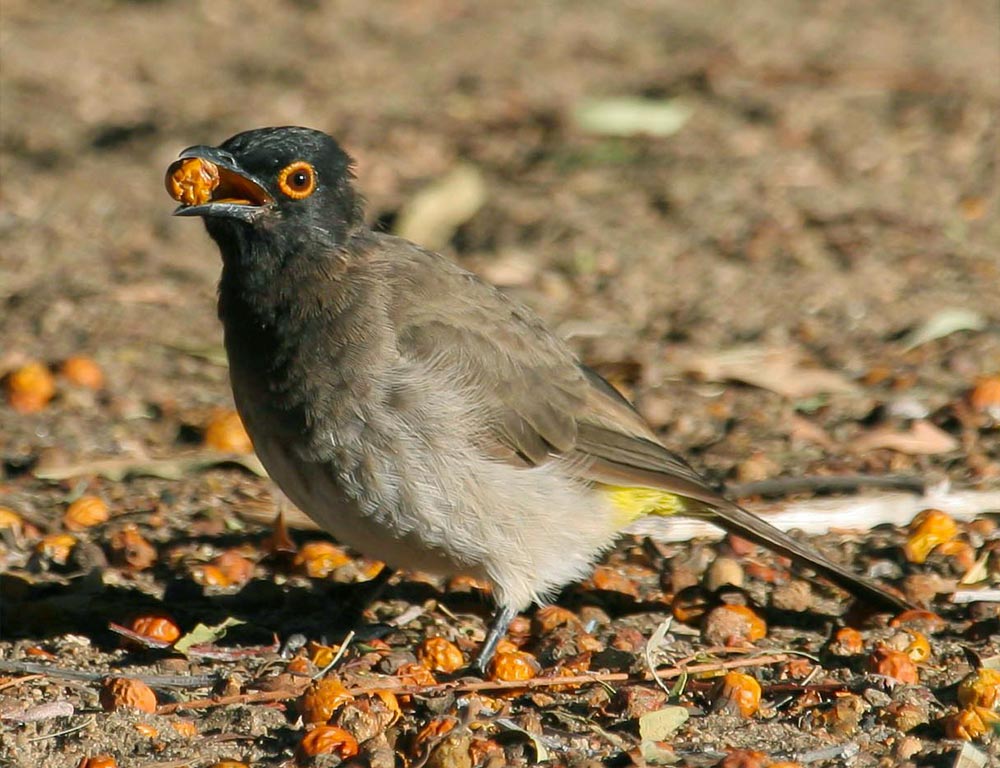
- Scientific name: Pycnonotus nigricans
- Population: Common
- Life span: 6-10 years
- Size: 7-8 inches
- Weight: 20-30 grams
- Food: Fruits, insects, and nectar
- Status: Least Concern (LC)
The African Red-eyed Bulbul, recognized by its red eye and melodious songs, is a common garden bird in South Africa.
With a life expectancy of 6 to 10 years, these bulbuls have a diverse diet, including fruits, insects, and nectar.
Their vibrant plumage and musical presence enhance the aesthetic appeal of the garden environment.
10. African Black Oystercatcher

- Scientific name: Haematopus moquini
- Population: Vulnerable
- Life span: 10-15 years
- Size: 15-18 inches
- Weight: 550-700 grams
- Food: Mollusks, crustaceans, and small fish
- Status: Vulnerable
The African Black Oystercatcher is a coastal bird found in South Africa, recognized by its black plumage and long, red bill.
With a life expectancy of 10 to 15 years, these oystercatchers primarily feed on mollusks, crustaceans, and small fish.
Their vulnerable status emphasizes the importance of coastal conservation efforts to preserve their habitat.
11. African Finfoot
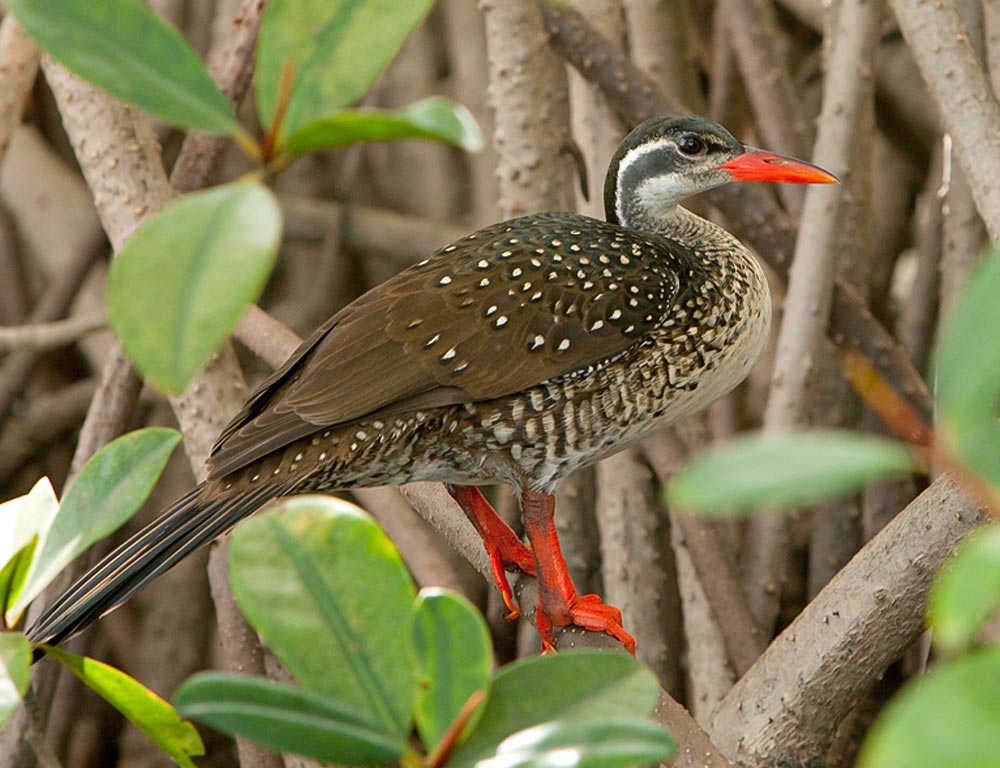
- Scientific name: Podica senegalensis
- Population: Near Threatened
- Life span: 5-8 years
- Size: 17-22 inches
- Weight: 400-600 grams
- Food: Aquatic insects, small fish, and vegetation
- Status: Near Threatened
The African Finfoot, a secretive waterbird, inhabits freshwater habitats in South Africa. With a life expectancy of 5 to 8 years, they feed on aquatic insects, small fish, and vegetation.
Their near-threatened status highlights the importance of preserving the wetland environments they call home.
12. African Green Pigeon
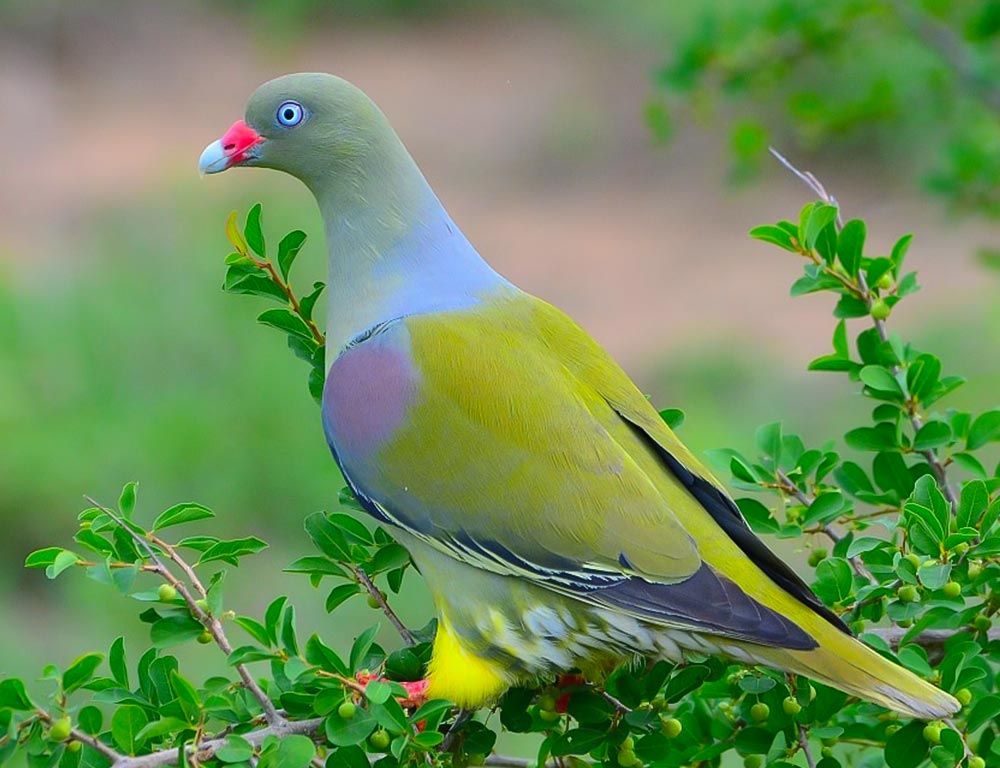
- Scientific name: Treron calvus
- Population: Common
- Life span: 5-10 years
- Size: 11-12 inches
- Weight: 120-200 grams
- Food: Fruits, berries, and seeds
- Status: Least Concern (LC)
The African Green Pigeon, adorned in vibrant green plumage, is a common sight in South African forests.
With a life expectancy of 5 to 10 years, these pigeons feed on a diet rich in fruits, berries, and seeds. Their presence adds a splash of color and activity to the forest ecosystem.
13. African Jacana
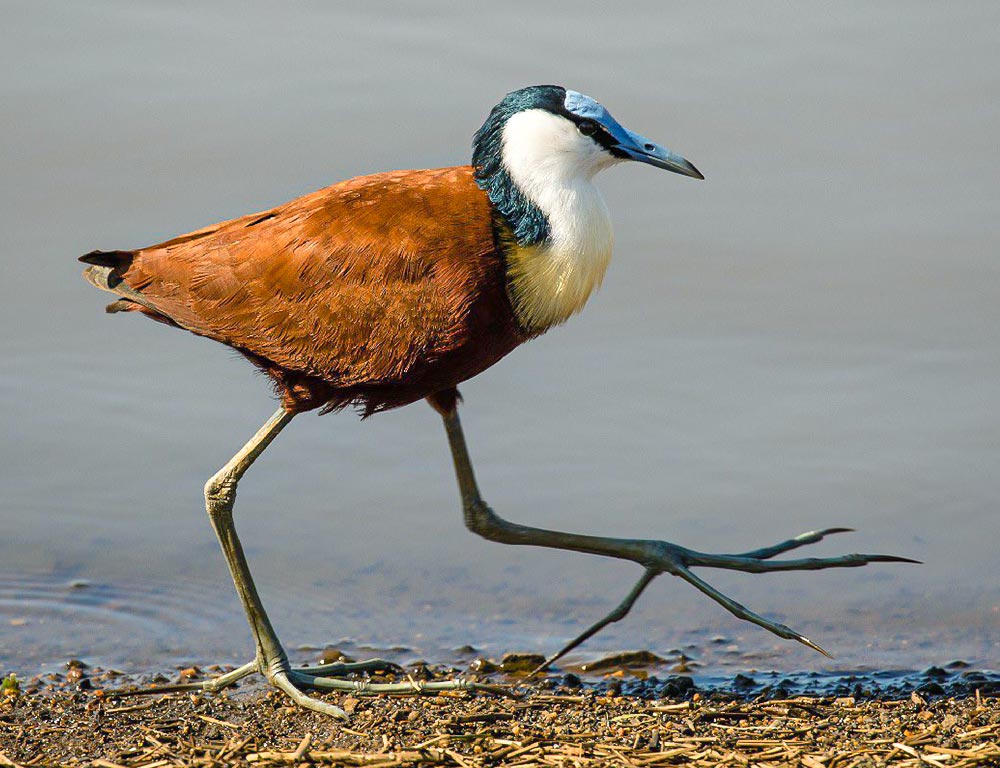
- Scientific name: Actophilornis africanus
- Population: Common
- Life span: 5-8 years
- Size: 9-12 inches
- Weight: 100-150 grams
- Food: Insects, aquatic invertebrates, and seeds
- Status: Least Concern (LC)
The African Jacana, known for its long toes enabling it to walk on aquatic vegetation, is a common wetland inhabitant in South Africa.
With a life expectancy of 5 to 8 years, these jacanas feed on insects, aquatic invertebrates, and seeds.
Their unique adaptation and graceful presence contribute to the biodiversity of wetland ecosystems.
14. African Purple Swamphen
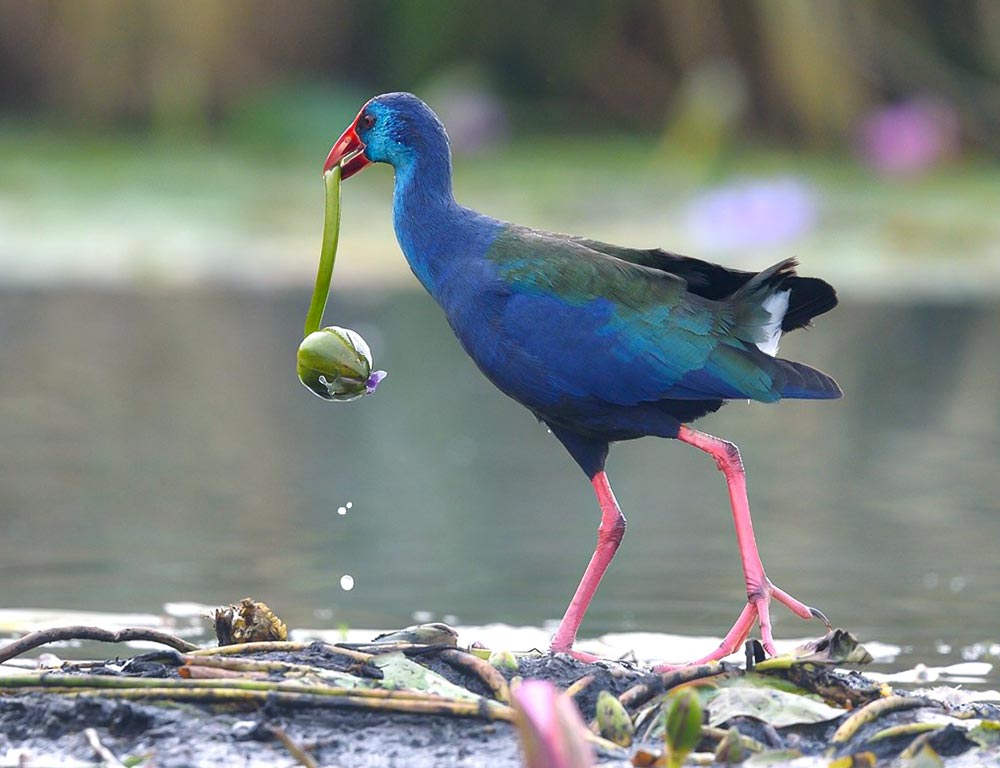
- Scientific name: Porphyrio madagascariensis
- Population: Least Concern (LC)
- Life span: 5-10 years
- Size: 13-17 inches
- Weight: 400-800 grams
- Food: Aquatic plants, insects, and small vertebrates
- Status: Least Concern (LC)
The African Purple Swamphen, recognized by its vibrant purple-blue plumage and long legs, is a common wetland bird in South Africa.
With a life expectancy of 5 to 10 years, these swamphens feed on aquatic plants, insects, and small vertebrates.
Their striking appearance and foraging behavior make them an integral part of wetland ecosystems.
15. Hoopoe
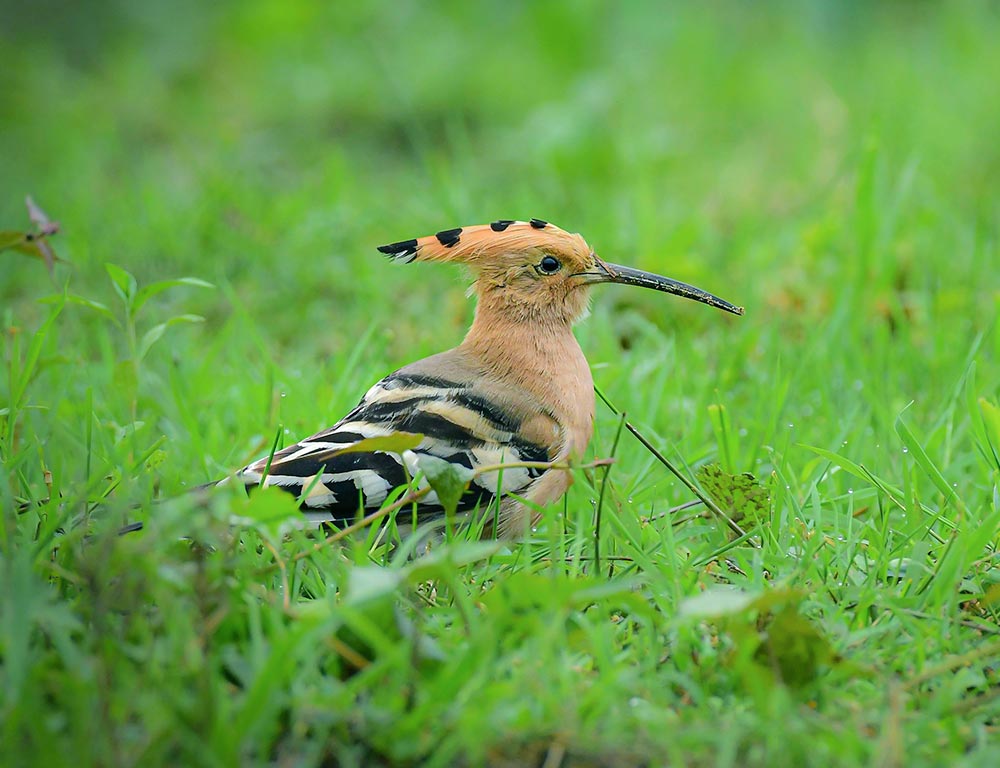
- Scientific name: Upupa epops
- Population: Stable
- Life span: 2-3 years
- Size: 10-12 inches
- Weight: 40-70 grams
- Food: Insects, small reptiles, and larvae
- Status: Least Concern (LC)
The Hoopoe, with its distinctive crown of feathers and striking plumage, is a charismatic bird in South Africa. With a life expectancy of 2 to 3 years, these birds primarily feed on insects, small reptiles, and larvae.
Their unique appearance and undulating flight make them a fascinating addition to the birdlife in South African gardens.
16. Cape Weaver
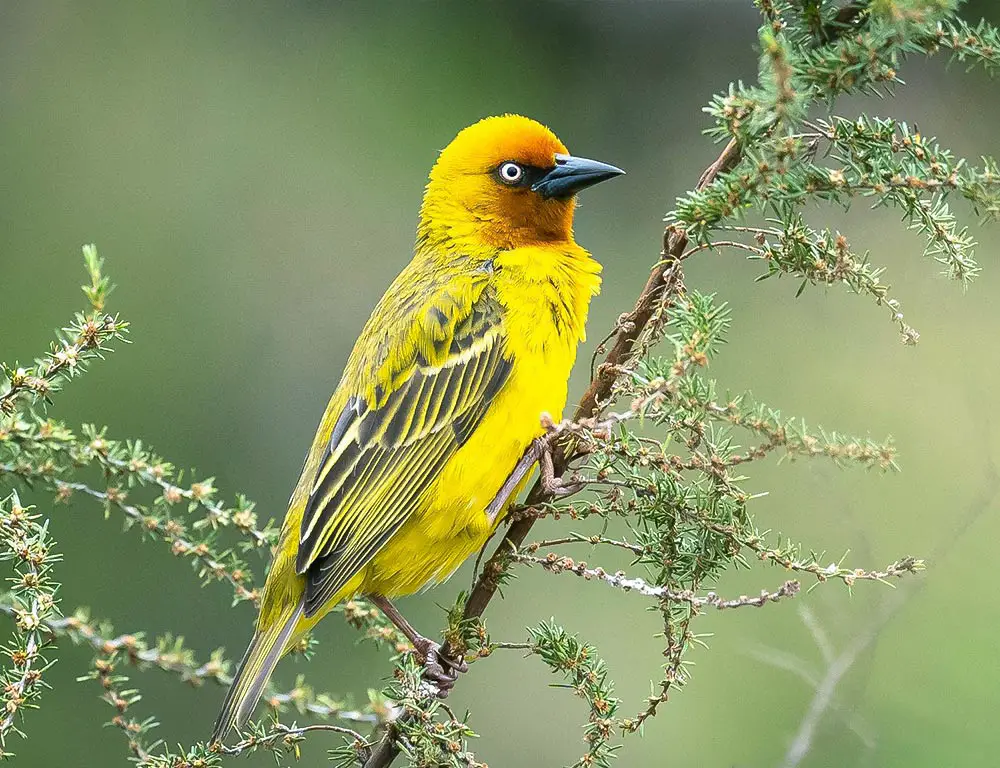
- Scientific name: Ploceus capensis
- Population: Abundant
- Life span: 6-10 years
- Size: 6.7-7.5 inches
- Weight: 20-35 grams
- Food: Seeds and insects
- Status: Least Concern (LC)
The Cape Weaver, with its bright yellow plumage and intricate nest-building skills, is a common garden bird in South Africa. With a life expectancy of 6 to 10 years, these weavers primarily feed on seeds and insects.
Their vibrant colors and communal nesting habits make them a lively presence in South African gardens.
17. Cape Sparrow
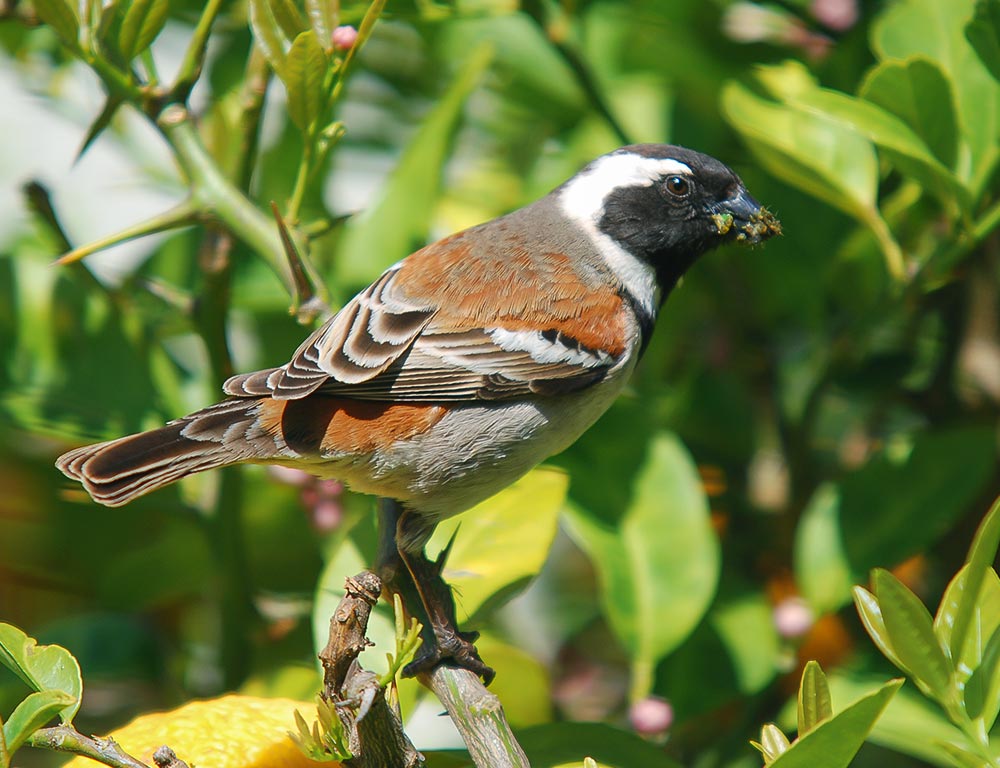
- Scientific name: Passer melanurus
- Population: Common
- Life span: 3-5 years
- Size: 6.7-7.5 inches
- Weight: 20-30 grams
- Food: Seeds, insects, and small fruits
- Status: Least Concern (LC)
The Cape Sparrow, with its distinct plumage and sociable nature, is a familiar sight in South African gardens.
With a life expectancy of 3 to 5 years, these sparrows primarily feed on seeds, insects, and small fruits. Their chirpy presence and communal roosting contribute to the lively atmosphere of the garden.
18. Olive Thrush
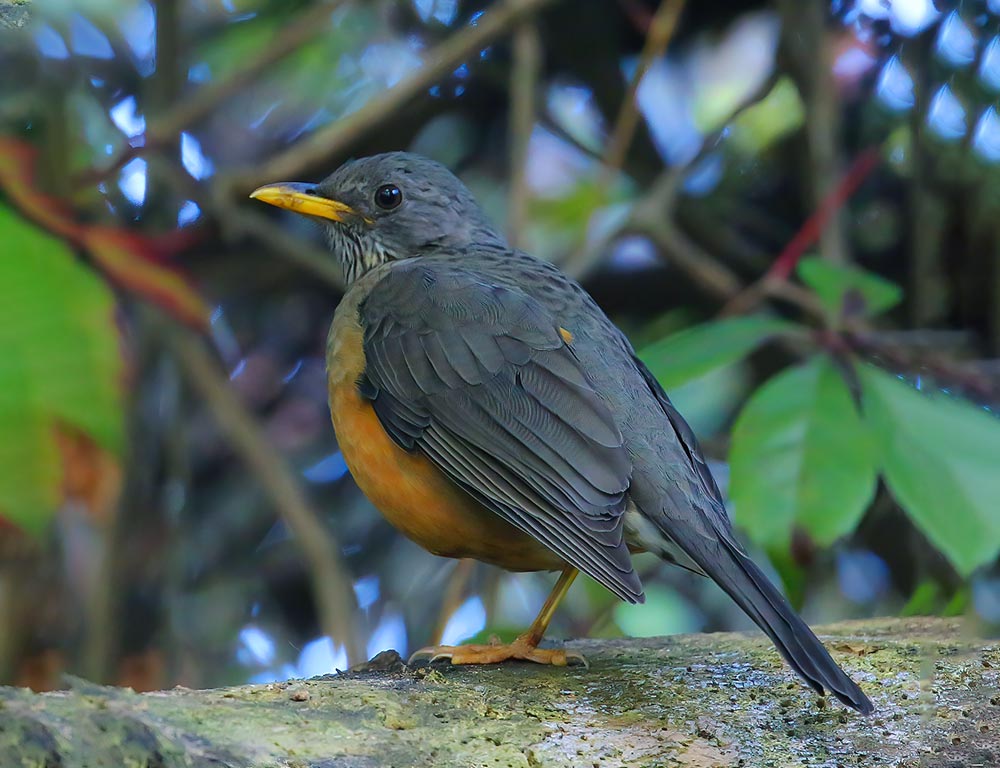
- Scientific name: Turdus olivaceus
- Population: Common
- Life span: 3-5 years
- Size: 9-10 inches
- Weight: 70-90 grams
- Food: Insects, worms, and berries
- Status: Least Concern (LC)
The Olive Thrush, with its olive-brown plumage and melodious song, is a common garden bird in South Africa.
With a life expectancy of 3 to 5 years, these thrushes feed on insects, worms, and berries. Their musical calls and foraging habits make them a delightful presence in the garden.
19. Cape Robin-Chat
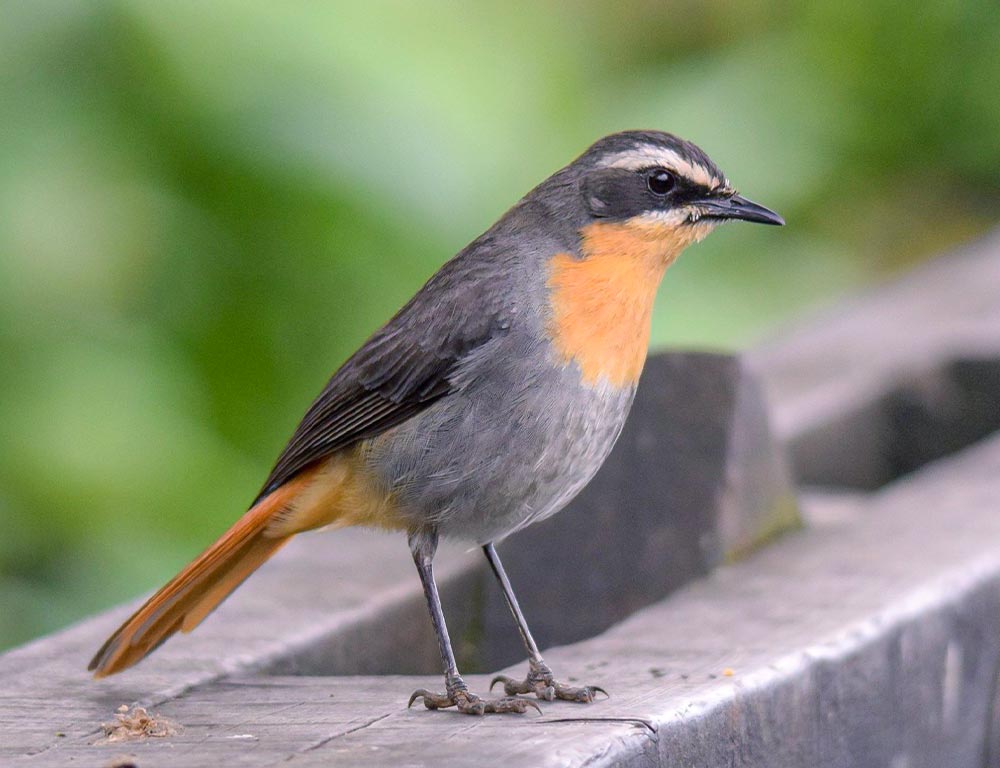
- Scientific name: Cossypha caffra
- Population: Common
- Life span: 2-3 years
- Size: 6.7-7.5 inches
- Weight: 20-30 grams
- Food: Insects, spiders, and fruits
- Status: Least Concern (LC)
The Cape Robin-Chat, with its distinctive white eye stripe and reddish-brown plumage, is a common garden bird in South Africa.
With a life expectancy of 2 to 3 years, these robins primarily feed on insects, spiders, and fruits. Their charming appearance and melodious songs make them a beloved visitor to South African gardens.
Wrapping Up
The diverse array of garden birds in South Africa enriches the natural tapestry, offering a captivating glimpse into the country’s avian biodiversity.
From the vibrant plumage of the Cape Weaver to the melodious calls of the Red-eyed Dove, these birds play pivotal roles in shaping the ecological balance of South African gardens.
The delicate intricacies of their behaviors, from the communal nesting habits of the Cape Sparrow to the skilled nest-weaving of the Southern Masked Weaver, underscore the importance of preserving and appreciating these feathered inhabitants.
This exploration into the lives of Garden Birds of South Africa reveals not only their unique characteristics but also the interconnectedness between avian species and their environments.
As stewards of our natural spaces, understanding and celebrating the presence of these birds contribute to the broader conversation of conservation.
With their vibrant colors, enchanting songs, and ecological significance, South African garden birds exemplify the beauty and resilience of the country’s avian life. Thank you so much.